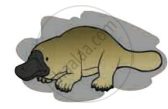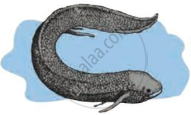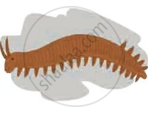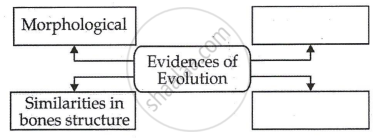Advertisements
Advertisements
प्रश्न
What do you mean by vestigial structures? Name four vestigial organs found in man.
उत्तर
1. Ill developed structures or structures which are of no use are sometimes found in both plants and animals. They are referred to as vestigial organs. The same organ may be functional in one organism but vestigial in another.
2. Vermiform appendix of man is one such organ. The reason could be that human ancestors were eating uncooked food with considerable amount of cellulose in it. The normal function of caecum and appendix
in mammals is the digestion of cellulose.
3. Man shows a number of other vestigial organs. About 100 have been named. A few examples are ear muscles, wisdom teeth, plica semilunaris (representing nictitating membrane of the eye), coccyx (reduced tail) etc.
4. In plants, the scale like leaves on the Indian pipe, a plant which has lost its chlorophyll and became saprophytic in nature, is vestigial.
5. There are certain flowers in which stamens do not bear anthers.
APPEARS IN
संबंधित प्रश्न
Give two examples of vestigial organs in human beings and plants.
(a) Select the homologous structures from the combinations given below:
(i) Forelimbs of whales and bats
(ii) Tuber of potato and sweet potato
(iii) Eyes of octopus and mammals
(iv) Thorns of Bougainvillea and tendrils of Cucurbita
(b) State the kind of evolution they represent.
With the help of any two suitable examples explain the effect of anthropogenic actions on organic evolution.
Write the similarity between the wing of a butterfly and the wing of a bat. What do you infer from the above with reference to evolution?
“Two areas of study namely 'evolution' and 'classification' are interlinked'. Justify this statement.
Explain the terms analogous and homologous organs with examples.
Enlist any four sequential evolutionary names of human ancestors.
Human tailbone is a vestigial organ. Explain.
The forelimbs of a frog, a bird and a man show the same basic design (or basic structure) of bones. What name is given to such organs?
Out of bacteria, spider, fish and chimpanzee, which organism has a better body design in evolutionary terms? Give reason for your answer.
The presence of which of the following types of organs in two organisms indicates that they are derived from the same ancestor?
(a) analogous organs
(b) respiratory organs
(c) digestive organs
(d) homologous organs
There are five animals A, B, C, D and E. The animal A uses its modified forelimbs for flying. The animal B uses its forelimbs for running whereas the animal C uses its forelimbs for grasping. The animal D can live on land as well as in water and uses its forelimbs to prop up the front end of its body when at rest. The animal E which respires by using spiracles and tracheae uses wings for flying but its wings are analogous to the modified forelimbs of animal A.
(a) What could the animals A, B, C, D and E be?
(b) Why are the forelimbs of animals A, B, C, D called homologous organs?
(c) What does the existence of homologous organs in animals A, B, C and D tell us about their ancestors ?
(d) Why are the modified forelimbs of animal A and the wings of animal E called analogous organs?
(e) State whether animals A and E have a common ancestor or not.
Select a set of homologous organs from the following:
(A) Wings of a bat and wings of a butterfly
(B) Wings of a pigeon and wings of a bat
(C) Wings of a butterfly and wings of a pigeon
(D) Forelimbs of a duck, forelimbs of a cow and forelimbs of a lizard
In a class, students were asked to observe the models/slides/pictures of the skeletons of forelimbs and wings of different organisms. After the observations the students made the following groups of homologous structures. Select the correct group :
(A) Wings of a bird and a butterfly
(B) Wings of a pigeon and a bat
(C) Wings of a butterfly and a bat
(D) Forelimbs of a cow, a duck and a lizard
Write short notes based upon the information known to you.
Embryology
Write the names of those animals in whom the human body organs are functioning.
Explain with suitable examples importance of anatomical evidence in evolution.
Draw a labelled diagram of T.S. of a leaf showing Kranz anatomy.
Explain any three molecular (genetic) evidences in favour of organic evolution.
Define phylogeny.
Answer the following question:
What are homologous structures? Give an example. Is it necessary that homologous structures always have a common ancestor? Justify your answer.
Name the parts shown in the diagram.
Human jaw

The decaying process of C-14 occurs continuously in dead organisms only.
Match the following.
| Column A | Column B |
| 1) Morphological evidences | a) Tail-bone or wisdom teeth |
| 2) Paleontological evidences | b) Leaf venation |
| c) Fossils |
Write a short note:
Embryological evidences
Enlist the evidences of evolution.
What is carbon dating?
Observe the following images and answer the questions.

- Which evolutionary evidences are indicated in the given picture?
- How are they formed?
- Which method is used to measure their age or their time?
Write the answers to the questions by observing the figure below.
 |
 |
 |
| (a) | (b) | (c) |
- Write the name of the animal ‘(a)’ in the figure.
- Write the name of the animal ‘(b)’ in the figure.
- Write the name of the animal ‘(c)’ in the figure.
- Which evolutionary evidence is illustrated by this figure?
- Write the definition of that evidence for evolution.
Homologous organs and vestigial organs are examples of ______ type of evidence in evolution.
Why do all the gametes formed in human females have an X chromosome?
The process of mating of individuals, which are more closing related than the average of the population to which they belong is called ______.
Flippers of Penguins and Dolphins are examples of:
Analogous organs arise due to ______.
The evolutionary story of moths in England during industrialisation reveals, that 'evolution is apparently reversible'. Clarify this statement.
Complete the following diagram:

Find odd one out:
Complete the following conceptual picture:

